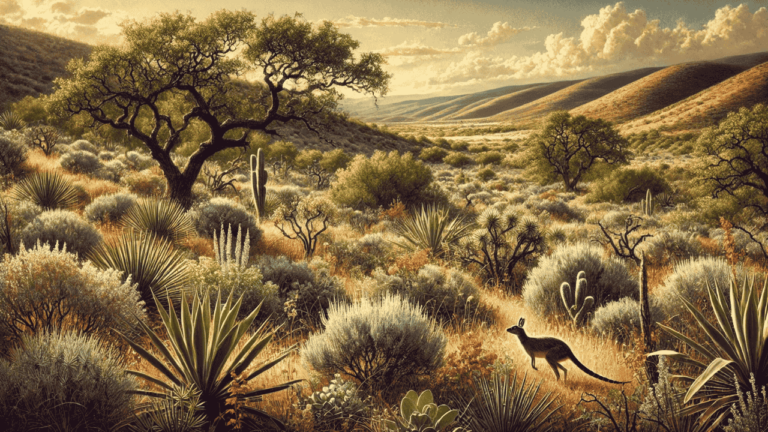Chaparral biomes, commonly referred to as schapernal in certain linguistic adaptations, are fascinating ecological regions characterized by dense vegetation consisting primarily of scrubby bushes and hardy trees. These biomes are crucial to the biodiversity of the areas they occupy, often found in regions with Mediterranean-like climates. This article explores the unique aspects of the schapernal, its global presence, the diverse life it supports, and the pressing conservation issues it faces.
The Global Footprint of Schapernal
Schapernal regions, from the sunny coasts of California to the rugged terrains of the Mediterranean basin, share a common climate characterized by hot, dry summers and mild, wet winters. This type of vegetation is also prominent in the southern tip of Africa known as the fynbos, central Chile’s matorral, and western Australia’s mallee regions. The adaptive nature of schapernal vegetation to these climates supports a diverse array of flora and fauna, making it a critical biome for ecological research and conservation efforts.
Schapernal in North America: A Closer Look
In North America, the schapernal is predominantly found in California, stretching over the coastal regions and the central valley, extending to parts of Mexico. This biome is not just a collection of plants but a complex ecosystem that supports various species of wildlife and has significant ecological functions such as soil preservation and fire regulation. The California schapernal is divided into several sub-types, including coastal, montane, and interior schapernal, each with distinct environmental characteristics and biological communities.
Flora and Fauna of the Schapernal
The biodiversity of the schapernal biome is vast, with plant species like the scrub oak, manzanita, and various types of sage playing pivotal roles in its ecological structure. These plants have developed unique adaptations to survive the long, dry summers typical of their environment. The fauna of the schapernal includes numerous species of birds, mammals, and insects that have co-evolved with these plant communities. Animals, from the iconic California roadrunner to various species of lizards and insects, rely on the dense, scrubby vegetation for habitat and food.
Conservation Challenges Facing Schapernal
Schapernal biomes are under significant threat from human activities such as urban development, agriculture, and logging. These activities not only disrupt the delicate balance of these ecosystems but also increase the vulnerability of schapernal regions to wildfires, which are natural but have become more frequent and severe due to climate change. Conservation efforts are critical in these regions to manage and mitigate these impacts effectively, ensuring that schapernal biomes can continue to thrive and support their unique biodiversity.
Climate Change and Its Impact on Schapernal
The resilience of schapernal vegetation is tested by the changing climate, which alters precipitation patterns and increases temperatures. These changes can lead to more intense and frequent wildfires, shifting plant and animal populations, and transforming the schapernal into a more arid, less biodiverse system. Understanding and addressing the impacts of climate change on these biomes is crucial for their preservation and the survival of the species that inhabit them.
Adaptive Strategies of Schapernal Vegetation
One of the remarkable aspects of the schapernal biome is its vegetation’s adaptive strategies to endure the harsh climatic conditions they face. Plants like the chamise, manzanita, and various species of ceanothus exhibit sclerophyllous characteristics—tough, leathery leaves that minimize water loss during the dry summer months. These adaptations are not just crucial for survival but also aid in the biome’s natural rejuvenation processes following wildfire incidents, which are prevalent and, to some extent, necessary for the regeneration of schapernal ecosystems.
The Role of Fire in Schapernal Ecology
Fire plays a pivotal role in the life cycle of schapernal ecosystems. Many plants in these areas have evolved to not only withstand fires but to thrive because of them. For instance, certain species of seeds require the heat from fire to germinate, a process known as pyriscence. Understanding and managing fire regimes is vital in schapernal conservation efforts, ensuring that fire remains a beneficial ecological force rather than a destructive threat.
Human Interaction and Its Effects on Schapernal
The interaction between humans and the schapernal biome has been complex. While indigenous practices understood and respected the role of natural elements like fire, modern approaches have often led to the suppression of fire, resulting in denser vegetation that is more susceptible to severe wildfires. Urban expansion and agricultural activities have also fragmented these biomes, leading to a loss of habitat and a decrease in species diversity. Sustainable management practices are essential to mitigate these impacts and preserve the ecological balance of the schapernal regions.
The Future of Schapernal Conservation
Looking forward, the conservation of schapernal biomes will depend heavily on our ability to adapt to and mitigate the effects of climate change. This involves crafting policies that address both the conservation of land and the management of ecological fires. Educating communities living near schapernal regions about sustainable practices and the importance of these ecosystems will also play a crucial role in their preservation.
FAQs About Schapernal
- What is schapernal?
- Schapernal refers to a biome characterized by dense, scrubby vegetation primarily found in regions with Mediterranean-like climates, known for its biodiversity and ecological significance.
- Where can schapernal be found globally?
- Schapernal is found in various parts of the world, including the coastal and interior regions of California, the Mediterranean basin, the fynbos in South Africa, the matorral in Chile, and the mallee in Australia.
- Why is the schapernal important for biodiversity?
- Schapernal supports a wide range of plant and animal species adapted to its unique climate conditions, making it a crucial region for ecological balance and biodiversity.
- What are the major threats to schapernal biomes?
- The major threats include urban development, agricultural expansion, logging, and the increased frequency and intensity of wildfires, often exacerbated by climate change.
- How can schapernal biomes be protected?
- Protection strategies involve enforcing conservation laws, managing human activities that impact these biomes, and implementing restoration projects to rehabilitate and preserve the natural environments of schapernal regions.


